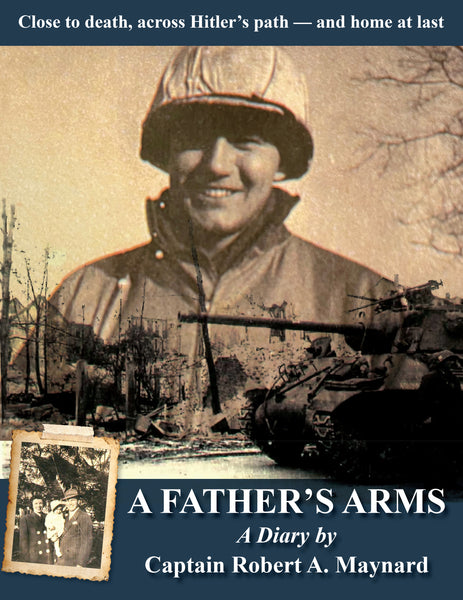A Man Against Insanity — Paul De Kruif
Bookstores and other retailers, please note: This book is available for ordering only through Ingram. Stores should access their Ingram accounts to find this title. Stores that have not yet opened an account with Ingram can do so at this link, then click on "Bookstores."
Ingram welcomes all retailers to open accounts, not just bookstores. So gift shops and other kinds of shops are eligible.
Book description:
“Maybe we’re not scientific here,” Dr. Jack Ferguson admitted. “I know we’re different than they are in the big medical schools. We don’t treat diseases — we try to treat sick people.”
In this book, originally published in 1957, author Paul de Kruif tells the story of Dr. Jack Ferguson, a family physician who originally made a name for himself by perfecting a three-minute lobotomy. In 1954, he arrived in Traverse City, Michigan, ready to perform 500 lobotomies on the so-called incurably insane. Yet he never got around to even the first one. Instead, using an unscientific combination of chemicals, copious notes and loving attention, he began one of the boldest drug therapy experiments ever attempted in a mental institution, helping to reshape how the mentally ill are treated in this country and abroad.
A Man Against Insanity — a recently rediscovered 1957 book by Paul De Kruif — describes the remarkable life and career of Dr. John (Jack) Ferguson, who began his medical career late in life with the goal of being a simple country doctor, only to become a pioneer in modern psycho-pharmacology.
The book provides an insightful description of his tumultuous early family life that led to a relentless pursuit of goals motivated by an insatiable need for approval. Despite repeated setbacks, a divorce, a heart attack, a barbiturate addition, and several psychiatric hospitalizations, Ferguson persevered and eventually graduated medical school twenty years after he first enrolled. He realized his dream when hired as the town doctor in a rural community. However, he abruptly abandoned his position after a few years as he collapsed into a fog of psychosis with grandiose delusions that led to an attempt to poison his wife and kill himself. Once again hospitalized, Ferguson emerged as a new man “to take action in the world your own self must die.”
Humbled and compassionate, Ferguson credited supportive psychotherapy and the warmth of the hospital attendants with helping him find a new direction for life — to serve psychiatric patients.
Ferguson trained in psychosurgery. He mastered the transorbital lobotomy and developed an innovative technique that drastically reduced surgical time and essentially eliminated mortality. His success brought him to Traverse City State Hospital where 500 surgeries were planned. However, he never performed a single surgery.
Instead he embarked on a new therapeutic direction — chemistry and love.
Aware of the advances in the chemical treatment of schizophrenia with the drug, chlorpromazine, Ferguson began “lone wolf” research. Through his trial-and-error method, chemistry replaced surgery. Assigned 1,000 female patients, Ferguson initially employed the tranquilizers Serpasil and Thorazine and then added an analeptic, Ritalin, to moderate side effects. This balancing technique led to international recognition and represented an important step in the foundation of modern psychopharmacology. Ferguson’s research liberated hundreds of women from decades of psychotic isolation in the locked state hospital seclusion wards by regaining their capacity to actively engage in the world and return to their lives with their families.
De Kruif’s style, while at times cumbersome, provides an intriguing snapshot into cultural mind set of the 1950s. The fact that Ferguson’s initial research involved only female patients will not be lost to contemporary readers. Nonetheless the book provides insight into the trial-and-error research method when behavioral observation provided the only mechanism available to evaluate change. In that respect Ferguson’s staff of 107 nurses painstakingly catalogued behavioral changes for the 1,000 female patients while providing comfort and encouragement, a combination of objectivity and compassion. Ferguson would say “we don’t treat the disease treat the sick people."
The improvement in functioning that Ferguson’s chemical cocktails brought to people diagnosed with schizophrenia gained national recognition. His results were widely replicated. As one colleague was quoted, we can now “talk directly to the person behind the schizophrenia.”
Over time Ferguson’s dream that medication would allow the family physician to manage symptoms of schizophrenia became a reality. Thirty-two years after the publication of A Man Against Insanity Traverse City State Hospital closed its doors for the last time.
This book is a must read for all students in the helping professions. DeKruif provides a fascinating overview of the scientific method and state of psychiatric care from the early to mid- 20thcentury. Beginning with William Lorenz’s 1916 proclamation that “insanity is chemical,” DeKruif charts the slow but steady course of scientific discovery from the brief glimmers of normality triggered by sodium cyanide to the profound of calming effects of the powdered Indian root, Rauwolfia Serpentina, the forerunner of the tranquillizer, Chlorpromazine
This is an intriguing story about scientific discovery and the Northern Michigan physician who prevailed over personal adversity to lead in the development of modern psychopharmacology.
Michael J. Sullivan LMSW
Family Psychotherapist
Retail (wholesale) price: $14.95 ($8.97)
Paperback: 203 pages
Publisher: Mission Point Press (February 2019)
Language: English
ISBN-13: 978-1-961302-02-0
Product Dimensions: 5.2 x 0.5 x 8 inches
Shipping Weight: 10.4 ounces




